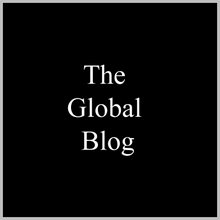Mikhail Gorbachev and the end of Communism

Communism has seen a painfully short lifespan and limited success as a government for nations. Most government prefectures have lasted for at least three hundred years, and each developed plus expanded on over the years. Democracy had its roots in Athens, Monarchies in early Britain. The list goes on. But Communism hasn’t been given too much credit. Yes, it did become somewhat commonplace in Europe during the late 1800’s and into 1960, but that’s about as long it has lasted. Perhaps it was carried out inefficiently? Or perhaps, it was just not developed enough. Whatever the case, the USSR was among the last countries to have a completely communist society in 1985. But they would come to undo the work achieved by Vladimir Lenin, who brought communism to Russia. The leader of the de-communism movement was Mikhail Gorbachev.
Mikhail Gorbachev’s control over the movement of reforms has had its ties to the past. Gorbachev was born during the totalitarian state of Joseph Stalin. He faced a hard life working as a collective farmer on the government owned farms. The suffering he dealt with helped inspire him to make reforms to the nation he was born into. We he came to office in the 1980’s, he did not wish for his Russia to continue Communism. He saw how it had weakened his country, and wanted to avoid any severe economical consequences and political consequences that the Soviet Union had suffered during his childhood, when Joseph Stalin was dictator. In a nutshell, Mikhail Gorbachev was opposed to the restriction of freedom. When he was elected for General Secretary in 1985, he wished to change the USSR for the better.
Gorbachev set his marks to emulating the capitalist type economy and less conforming laws. This organized plan for the reform movement across the USSR was called Perestroika, Russian for “reconstruction.” In summer 1987, Gorbachev met with the CPSU, or Communist Party of the Soviet Union, where he laid the groundwork for goals he wished to be met in his society changing reform that was Perestroika. He also created a state of openness to ideas that the society could be improved upon. This was called the Glasnost, Russian for “transparency,” where ideas for change and what should be changed could be expressed, and criticized openly, contrary to the old Communist regime’ that encouraged people to keep everything to themselves. People became full of hope again: they’d finally be breaking out of the oppression of Communism, and back into freedom. The Perestroika program brought numerous and astonishingly quick changes to the USSR. It allowed religious practice again, after being abolished in the union in the 1930’s. Churches reopened as a result, and people were content with the change. The open policy of the union now allowed for a sort of freedom of speech and freedom of the press. As a result, dissidents who had gone against the Communist regime’ were released from prison. It also allowed authors to write as they wished again. In conjunction, people began to openly criticize how the USSR functioned, and without being thrown into jail for it. Besides social reforms, the Perestroika brought some very significant economic reforms. Most importantly, it adopted capitalism. People were no longer ordered what to do and how to do it. It was a free economy now, and people could begin whatever business they liked. There were two small downsides to this: one, business were no longer funded by the government, so if they failed, they failed, and two, the shift from “do the work because you have to” to “do the work because you can make money” was a shock to many, since now effort had to be outputted to make a living.
Can you see the stark differences between this new USSR policy compared to the old Communist policy? The change was from restriction to freedom, to working for the government to working for yourself, and from persecution for individuality to freedom of expression. The reforms paved a crystal clear path to the end of Communism, because one of the only governments to still use Communism was the USSR. What happens when the last country of Communism loses its Communist aspects? Its not Communist anymore.



